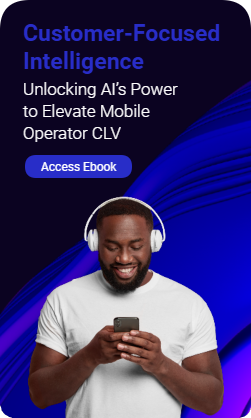In a recent Forbes article, our CMO and global president, Robert Hackl, delves into the transformative impact of Generative AI (GenAI) on business operations. The article, titled “GenAI Is Your Newest Employee: Here’s How To Make It A Star,” explores practical strategies to maximize AI’s potential, and offers a roadmap for businesses to use this technology effectively.
GenAI is Your Newest Employee. Here is How to Make it a Star.
Some experts say an AI tool is like an office intern who lies a lot. Well, if that’s true, it raises a few questions. What jobs can AI do well? Which tasks can you trust it with? And how can you keep it honest?
The good news is that there are reliable techniques you can use to address all these issues. Leaders in a variety of industries are already experimenting with AI in the workplace. They are learning how to get great results and how to stop the tech from “making things up”.
This quick progress is not surprising. Generative AI (GenAI) is now a proven must-have technology for senior decision makers. It has evolved at light speed and has the capacity to fundamentally transform how C-level executives make decisions, communicate and grow their organizations.
In fact, a 2023 survey by BCG revealed that 80% of leaders already have incorporated GenAI into their operations, and 62% expressed optimism about its potential. Another study conducted by McKinsey identified 63 use cases for GenAI across 16 business functions. It concluded that these cases could deliver economic benefits worth an estimated $2.6 trillion to $4.4 trillion.
So how can you turn your AI from an unreliable intern into a star employee? I believe the secret is doing two things. First, choose the right use cases. Second, optimize the way you manage your GenAI “employee” to get high-quality results.
Seven Stellar Use Cases for GenAI:
1. Elevate your understanding of the market you’re in – and your customers
Harness AI’s capacity to sift through extensive data sources to keep you updated on industry trends, technological advancements or regulatory shifts relevant to your business. In addition, deploy AI to do sentiment analysis. AI tools can continuously monitor social media platforms to unlock valuable real-time insights into customer behavior and sentiment.
2. Generate new creative ideas
GenAI is great for brainstorming. You can use it to provide fresh perspectives on various topics, from product concepts to marketing strategies. It streamlines the creative process, so in 15 minutes you might be able to complete a session that normally takes an hour.
3. Make better forecasts
Use GenAI to interpret market conditions, anticipate risks and tailor strategies to the current business environment. For example, GenAI can analyze large datasets to detect anomalies or unfolding trends and developments in your market, in financial markets or in the competitive landscape and provide early signs of potential opportunities, risks or disruptions.
4. Simulate stakeholder reactions
How will stakeholders respond to your announcements, negotiations, or launches? This used to be guesswork, but now GenAI can simulate various scenarios and predict these reactions in advance. It can access historical data and identify reference cases to generate insights on potential scenarios, as well as options on how to react best. Just be careful not to share confidential or proprietary data sets for such a simulation with public versions of AI. Instead, use a “sandboxed” environment, which keeps data isolated and safe.
5. Improve your writing, even in different languages
AI cannot fully replace human mind, but it can augment human intuition and context. So instead of staring at a blank screen and searching for the right words, you can use GenAI to create drafts memos, documents, and other communications.
GenAI also has fantastic multilingual capabilities. This can help you quickly translate messages for global audiences for a fraction of the cost of an agency.
6. Improve your own executive skills
Use AI-powered learning resources and realistic business case simulations to enhance your own performance. You can create tailored learning experiences that align with your specific needs and professional objectives.
7. Raise the bar for corporate ethics
Every individual and organization can be affected by bias. GenAI is adept at identifying biases that humans may overlook. This makes it useful for detecting potential blind spots in your communications, ensuring compliance with regulations and addressing ethical issues. Needless to say, it’s important to maintain human oversight, as AI itself can also exhibit biases from its training data.
How to manage your GenAI for high-quality results:
Let’s say you have tried using ChatGPT for the above cases and still got frustrated. Maybe your AI is still giving you unreliable results. Don’t panic. Follow this quick tutorial to get better results:
- Provide context: Frame questions with necessary background information. Remember that AI lacks human intuition and context, so context-rich queries tend to yield better results. If your company has already deployed a sandboxed instance of GenAI, you could even leverage your company’s unique data points to generate proprietary insights.
- Be specific: Precision is key in your queries; GenAI responds best to clear instructions. Approach broad topics in stages with simple prompts: start with an overview and then fine-tune responses after receiving an initial output. For example, when inquiring about trends, specify your industry, timeframe and region.
- Provide feedback and iterate: If the initial response isn’t satisfactory, adjust your query and re-engage. Create a feedback loop to fine-tune the AI’s output. You can push the AI to improve by responding with specific feedback like, “This isn’t good enough,” “Please omit X”. This will yield more accurate answers. You can also fine-tune the tone of your writing with more specific directions in your next prompt e.g., “Make the tone professional and empathetic but not verbose, and don’t alter the facts”.
- Verify responses to “keep it honest”: Always cross-reference GenAI’s responses with reliable sources and experts. If pushed or prompted incorrectly, GenAI will always give you an answer, even if it is wrong or fictitious. Therefore, evaluate responses critically and apply your common sense. As a simple hack, you can prompt it with, “It is okay not to have complete information on a request, but do not make something up”. Don’t be the lawyer who tried to win a lawsuit by using ChatGPT to produce reference cases without doing his due diligence.
Generative AI is a powerful tool, and we are all still exploring its potential. But by embracing it now and following best practices, you can improve your performance and gain a vital competitive edge.
For a comprehensive understanding of how AI can transform and elevate your business, read the full article here.




